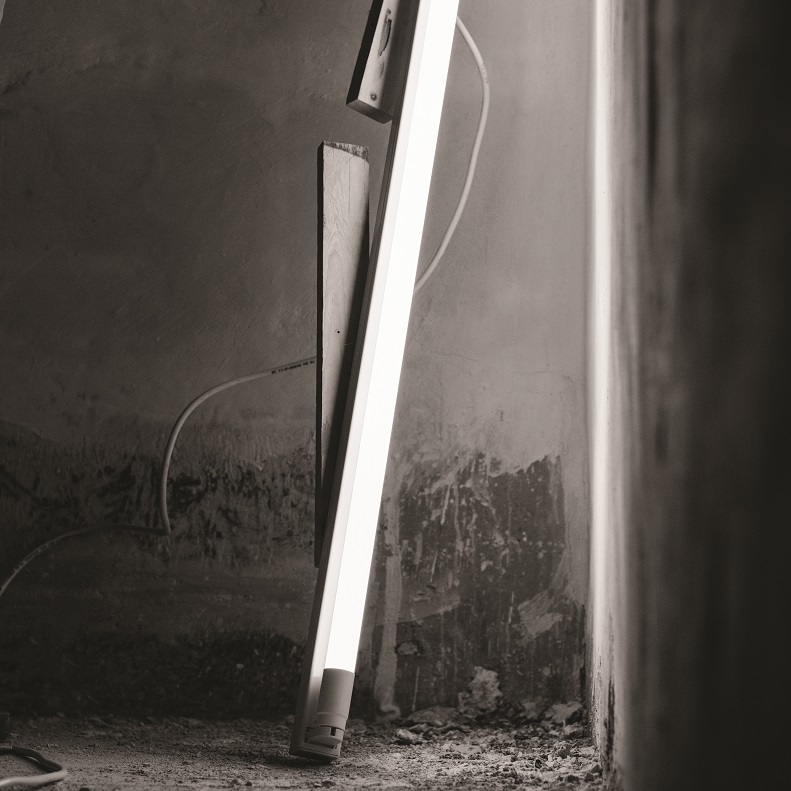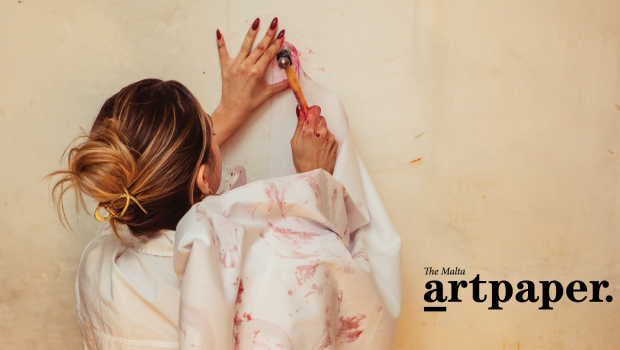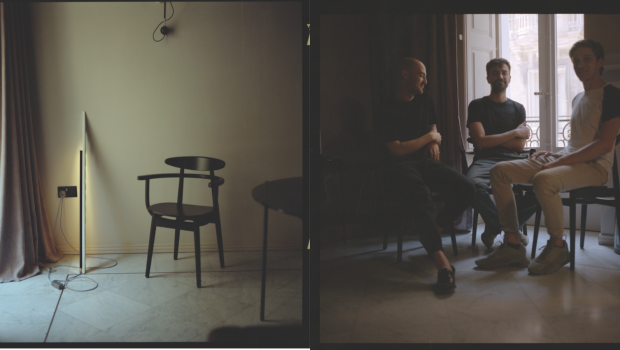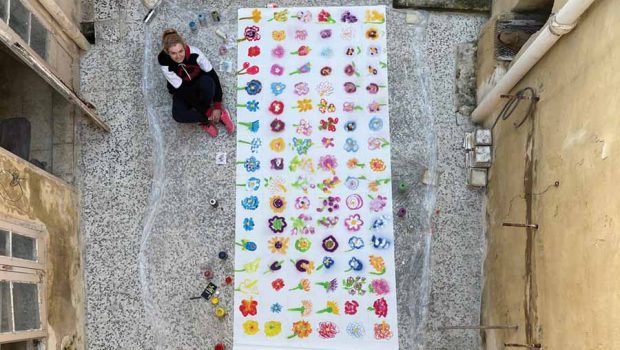Art after Lockdown
Plan B: Post-pandemic – the ‘new’ exhibition experience?
I don’t buy into virtual experiences. Never have I watched a concert, dance piece, performance or even toured a museum or gallery online. Heck, I won’t even read an e-book. Perhaps mine is an old school mentality, but I like to think of myself as one who enjoys authenticity – I need to feel moved by an artwork, recital or choreography; playing online spectator means that you’re once, or even twice removed from that experience. Actually, what I don’t buy is the selectivity – the framing, the direction, the light, the mood, the background music… online, the experience belongs to another. The viewer simply partakes, just as you would with a film or TV series. Physically, you make it your own, and that’s what you take from it; that’s what seals it.

I’ve long grappled with the notion of consuming art and culture online, and I’ve resisted it, vehemently. Truth be told, not even a pandemic could convert me. Admittedly, I was tempted – most especially when Tate started advertising virtual tours. Then again, I had been looking forward to visiting Tate Modern for their 20th anniversary celebrations, and watching art-filled yet empty gallery halls from my small screen simply wasn’t going to cut it. Digitalisation and new technologies are tools generally used to enhance, support, create legacy and accessibility to the arts; but on lockdown, it suddenly became the only means available to maintain a semblance of a relationship between arts institutions and visitors. Overnight, the development of audiences turned virtual.
Despite the above rant, there is one huge plus point here. Online consumption is generally free – which is a huge selling point, not only because of the obvious, but also because of the possibility of attracting different portions of audiences who generally shy away from events of a cultural nature, ticketed or not. Online experiences actually have the possibility of whetting the appetites of those who would customarily opt for a different method of ‘entertainment’, and that could actually give those spectators a significant enough experience to warrant future cultural consumption and experiences. Moreover, the concept of ‘on demand’ is incredibly attractive. No queues, no need to travel, no need for a ‘shared experience’; just a click and the spectator is propelled into another space, another country –into a curated and fabricated world based on a particular thematic or showcasing the work of a unique artist or performer.

It has been months since the last exhibition launch. It’s been so long that I struggle to remember the last show or even where it was held. Lockdown has been a strange and unique experience for all of us, to varying degrees. After the first exhibtions were cancelled, all the others followed suit. It was a veritable domino effect. Yet a couple of weeks after most of the social distancing measures were lifted, a small yet distinct number of events sprung up on my calendar. At the time of writing, there are four exhibitions showing / coming up, namely: The Little Things, an exhibition by Elisa Von Brockdorff showing at La Bottega Art Bistro; Transition: A Silver Filigree Exhibition by Kevin Attard, at Studio 87; Momentum / Site N°02; Rendez Vous, a collective exhibition being held in Birgu; and lastly, Gabriel Buttigieg who will be showing a series of works at The Splendid, previously exhibited in Gdansk, under the title of The Beach.

Some galleries haven’t even begun advertising their shows – perhaps as a precautionary measure. Desko, for example, held an open call during lockdown, for a project-exhibition titled Indoors, which will be held during the last quarter of the year. Other exhibitions, meant to be held during the March-June period, were postponed and will be scheduled from September onwards. A short chat with gallery manager Nicole Parnis, revealed that she is being cautious with reopening the space, and that she’s also using the lull of the summer period to plan out a vibrant programme for autumn/winter. With a small and intimate space, she’s also considering adopting a measure that is being used in galleries abroad – that of a token system: on establishing the maximum ideal of visitors, a number of tokens will be made available at the door, and entry will only be consented by proffering said token. Once a visitor has ended their visit, it’s placed back, and the next visitor can enter, a kind of ‘one in-one out’ system.
Gabriel Buttigieg, on the other hand, whose exhibition opened on July 18, has decided against an exhibition launch altogether. Instead, he has chosen to make himself available at The Splendid for the duration of the show, in order to tend to visitors, show them around and explain the nature of the work. This would also mitigate any form of crowds gathering, allowing them to maintain social distancing measures for a while longer. Whilst responsible, this initiative allows for a more personal and intimate reading and experience of the work.
Studio 87 founder and curator, Justine Balzan Demajo, has bravely decided to take the plunge and reopen her space with an exhibition of three-dimensional filigree pieces created by Kevin Attard, during lockdown. “We have to get back into it,” she tells me, “if there was ever a time to support artists and creatives, it’s now. It’s also interesting to see what [artists have] come up with during the pandemic itself.” Whilst limiting the number of invites, the distribution of plinths in the space has been designed to divide the space strategically.
Just like Nicole, during lockdown, Justine launched an initiative titled Reimagining Valletta, wherein those interested in participating, could select from a series of photographs captured by Malcolm Debono, and print any chosen image to use as a clean canvas, to recreate the city by means of painting, drawing, collage, or any preferred medium.
Finally, I also caught up with artist / curator and Blitz founder, Alexandra Pace, who has used the lockdown period in order to create an online space named: OPEN. In actual fact, she had been toying with the idea long before the pandemic broke. The online space was never meant to replace the physical space, but with lockdown, and with a firm concept already in place, she chose to use her time to experiment with new models. Split into two, the online space is designed both for public programmes as well as exhibitions. The Blitz Kids at Home programme was first to be launched; here, young audiences were invited to interact with artists Matthew Attard, Bettina Hutschek and Marinella Senatore by contributing to a series of co-created projects which resulted in a picture book or animation, for instance.
Moreover, beginning of June, Blitz also launched The Eye of the Storm, an online show, in which a series of 7 films and video works will unfold over the coming months. The participating artists/collectives each respond to the changes caused by the pandemic.
In reality, lockdown has taught us many lessons, possibly the main one being the need to remain connected – through one form or another; through one medium or another; physically or, at least, virtually. But it has also taught us that the one cannot replace the other. We’ve literally been left with multiple cravings, on every possible level – from hugging our friends in public, to travelling and physically experiencing any form of art/culture. I guess there is no Plan B, but rather a modified and holistic Plan A that caters for wider needs. A plan that is more accessible, which supports and enhances, and which offers additional insights and learnings.








